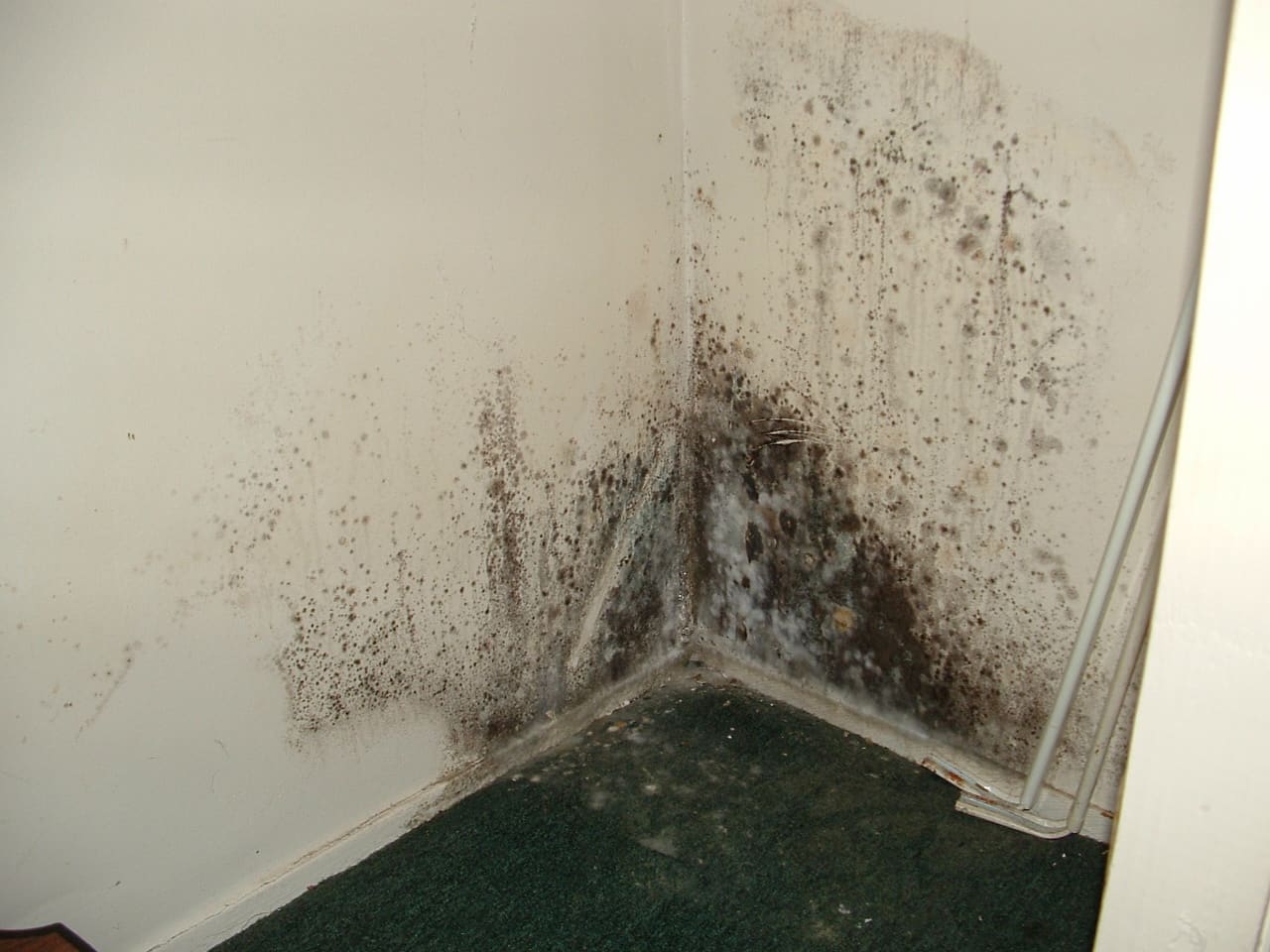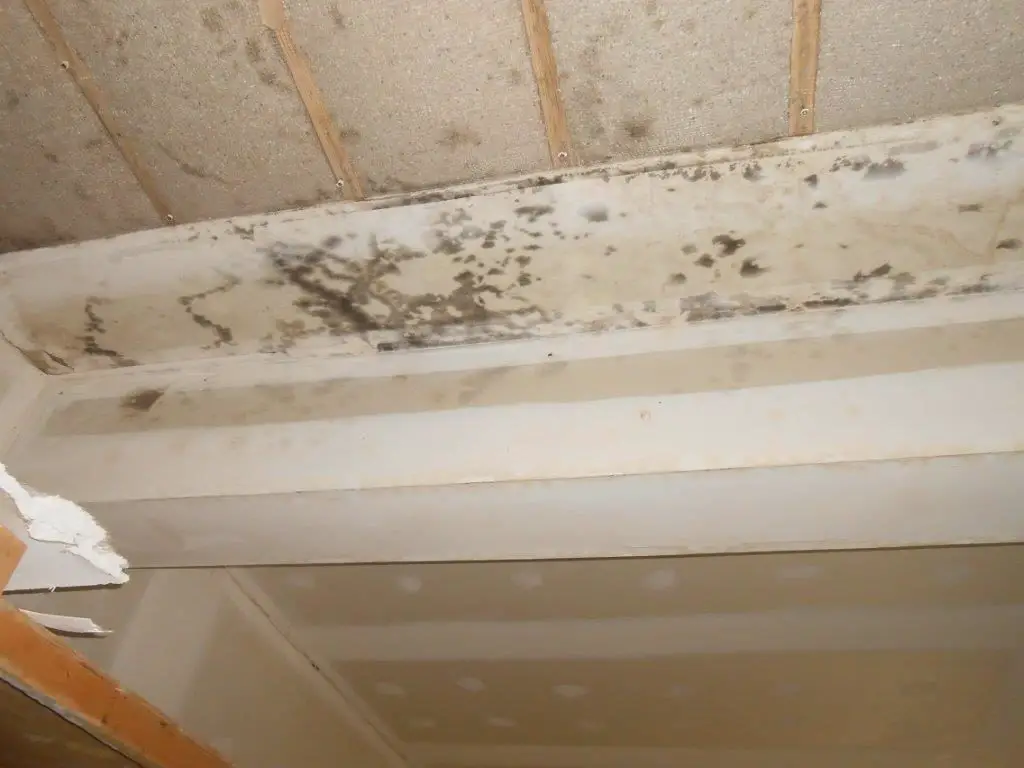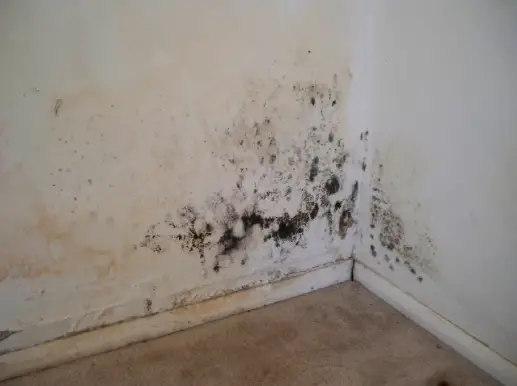Moisture In Your Crawlspace
You might not have a full basement, but youll probably have a crawlspace under your home unless your place was built with a slab-on-grade. Confined crawlspaces contain optimum mold-growing conditions, and thats due to ever-present moisture thats not taken care of. Here are some common crawlspace moisture sources:
Lack of ventilation from passive cross-flow or mechanical means
Missing or compromised vapor barrier
Bare earth floor with no concrete skim coat
Leaky water lines or drain pipes
Disconnected dryer vents that pump humid air
Condensation in furnace ducts
Drain lines from condensation in high-efficiency furnaces
Rain or flood water
Holes or cracks in foundation walls
High ground water tables
Poor exterior grading that allows water to flow against foundation
Poor drainage on foundation backfill
Blocked perimeter and footing drain tiles
How To Tell If Mold Is Toxic
Mold is a nasty problem to deal with for any home or business-owner. In the wake of a disaster such as a storm, its possible for mold to start growing in as quickly as 1-2 days. Whats even more alarming is when that mold turns out to be toxic, posing a serious risk to you and anyone else on your property.
To clarify, its not that the mold you are dealing with in and of itself is toxic. Its that certain strains of mold, like the notorious Stachybotrys chartarummore commonly known as black moldproduce mycotoxins. Its these mycotoxins which may cause a burning sensation in the throat and lungs, chest pain, persistent coughing, fever, rashes, and migraines. Prolonged exposure to Stachybotrys may lead to serious health issues, including breathing problems, fatigue, sinusitis and other pain in the sinus cavities, and even depression.
How to tell if you may be dealing with toxic mold in your home:
Stale And Musty Odors
Mold, whether it is visible or not, emits an unusual and unpleasant odor. If an area in your home persistently smells musty, there is a good possibility there is mold in the room. You can follow the odor to where it is strongest, find the mold and remove it. However, if the mold is in an unreachable place, like inside walls, you need to call in a professional to help you remove the growth
Recommended Reading: How To Get Black Mold Stains Out Of Clothes
Surface Changes And Deterioration
Your walls appearance can change significantly if theres mold growth behind them. In addition to discoloration and stains, your walls may deteriorate. Paint or wallpaper can crack, peel, or bubble because of moisture and mold growth. Furthermore, your walls may become warped or even bow or bulge when theres a water issue, which often leads to mold growth.
How Do I Fix Mold In My House

Getting rid of mold is the only way to ensure you dont encounter the same problem in the future. You also need to keep your house dry and well ventilated to keep it dry. Looking for all leaks and fixing them can also help with keeping your home dry and mold-free. In case you dont find leaks, but you still have mold, check the ductwork around your ventilation systems.
When removing the mold, you are going to be better off leaving it to the experts. If you believe you have mold in your house, dont hesitate. Contact ServiceMaster Fire & Water Restoration Services for help today! Our mold remediation experts will help identify and treat your house with ease. Call today!
Derek Collier
Don’t Miss: What Are Signs Of Mold Illness
Signs Of Mold Inside A Household
Bubbly/Blistering Walls
Bubble formation on walls is a common sign of mold infestation. Areas with the highest moisture content will mostly have these bubbles. Its important to examine the basement walls, bathrooms, and areas around the window to confirm the issue. Areas near a leaky pipe or window sill are a breeding ground for mold infestation.
In such a case, you might have to scrape down the paint, clean and dry the surface, and patch things up before repainting the wall to fix the issue.
Musty Smell
Usually, a strong, musty, unpleasant odor is a dead giveaway that mold infestation is in progress. The smell is more prominent around damp and moist areas around the house like sink, bathroom, and kitchen.
Rust
This is another classic sign to watch out for. When theres excessive moisture indoor, it finds a way to latch onto all kinds of objects including metallic ones. Its only a matter of time before the metal starts to rust due to excess water content in the air.
Allergies
Mold continues to release tiny spores in the air that you eventually inhale. Although the immune system is wired to fight off these harmful spores, many people contract the flu due to mold infestation.
Therefore, if you cant seem to shake off flu-like symptoms and allergies it might be a sign that you are dealing with mold inside the house. Other than flu, mold can also cause sneezing, coughing, skin irritation, sore throat, and a runny nose.
Visible Dark Patches
Is Resting Beside Mold Bad For Your Health
Direct exposure to mold or wetness in your home has been associated with adverse respiratory results in all age groups. This direct exposure has actually likewise been connected to sleeplessness in adults. We aimed to explore the association between direct exposure to visible mold or wetness at home and also sleep problems in children.
Also Check: How To Cover Mold On Walls
What Is Mold And What Causes Mold In Your Home
Mold is, by broad definition, a type of fungus that sprouts from microscopic spores floating in the air. When clusters of mold spores grow on surfaces, they start to reproduce and become visible to the human eye. If you have mold allergies, asthma, or another lung condition, even breathing in the microscopic pores can trigger an attack. If you dont, you may not even be aware that there is mold in your home until you see it or smell it .
All homes have the key ingredients needed for mold growth: the presence of mold spores, a surface for it to grow on, oxygen, warmth, and darkness. When you add moisture, whether from a water leak, stagnant water, or high levels of humidity, into the mix, thats where mold problems begin. Knowing where mold is commonly found in homes can help you prevent and treat it so you can keep your home and body healthy.
Mold Reactions: Who’s At Risk
For people sensitive to mold, inhaling or touching mold spores can cause allergic reactions, including sneezing, runny nose, red eyes, and skin rash. People with serious mold allergies may have more severe reactions, including shortness of breath. In people with asthma who are allergic to mold, breathing in spores can also cause asthma attacks.
In addition to people with allergies and asthma, others who may be more sensitive to the effects of mold include:
- Infants and children
- People with chronic lung disease
Recommended Reading: How To Eliminate Mold In Crawl Space
Common Signs That Imply You Have Mold In Your House
By homoes
A part of the fungi family, mold is a common organism around the world. It can grow both outdoors and indoors. Out in nature, mold plays an important role in the ecosystem. It helps to break down animal matter, dead plants, leaves, etc.
However, indoor mold growth is a big problem that many homeowners deal with. Other than causing an off-putting, musty smell, deteriorating the decor walls, and compromising the structural integrity of the house mold can also cause health issues like infections, allergies, and asthma.
Read more to know more about mold and mold cleaning.
How To Tell If You Have Mold In Your House
It can be hard to tell if you have mold in your house. Obviously, if you see mold somewhere, youve got a mold problem in your house, but mold can hide in walls, ventilation ducts, crawl spaces, and in other hard-to-see areas.
A common way to check for mold is to smell for it. A musty smell in an area of your home is often an indicator that there is some kind of mold present. Symptoms like a persistent runny nose, watery eyes, sneezing and throat irritation could also be indicative of mold.
In addition, anywhere that has been exposed to a significant amount of moisture such as water damage from flooding is a potential area where mold may be growing. Look for water where it shouldnt be, and check areas which may have flooded in the past.
You May Like: How To Clean Mold From Grout Without Bleach
Your House Smells Musty
Were not knocking your cleaning skills, but mold that grows undetected can pose a real health risk. This is especially true for the elderly, warns Dr. Parikh. Their symptoms are generally similar, but all chronic conditions are worse in the elderly as their bodies are not as resilient as younger patients and usually have other medical problems which may interfere with or complicate the treatment, says Dr. Parikh. Here are 9 ways to get rid of mildew.
Treating Black Mold Poisoning

If you suspect youre suffering from symptoms associated with black mold exposure or poisoning, there are some things you can do to improve your health.
In conclusion, the best way to avoid the negative effects of black mold poisoning is to minimize your black mold exposure.
You can do this by preventing its growth in the first place. If its too late to prevent it and you suspect theres black mold already in your home, dont wait to book removal, completed quickly and efficiently by the industry experts.
Black mold, typically green or black, in your home, can be extremely hazardous to your health.
You May Like: How Clean Mold From Shower
How To Test For Mold
You probably don’t need to do mold testing or buy a mold test kit, especially if the fungus is visible. Because the health effects of mold vary from person to person, the CDC says that if you can see it or smell it, it should be removed, no matter what type of mold is in your home.
While it’s not possible to completely eliminate mold in your house, you can prevent a build-up by cleaning up any wet or damp spots and fixing any existing water leaks.
Neither the CDC nor the Environmental Protection Agency recommends doing routine mold samplingsboth organizations point out that there are no federal limits for mold in buildings, so people can’t check their apartment complex’s compliance with the law, for example. Plus, the testing can be expensive.
What We Take Issue With
As you can probably tell from the radio show, I have a problem with a technician who performed no test on the substance and claimed no certification on the matter, declaring what the substance was and that he had the solution available. Until a proper diagnosis is performed, dont pay for an expensive solution.
If you notice or have a home service provider notice something that appears to have mold-like qualities, there are specific procedures you should follow.
Recommended Reading: Cleaning Mold In Basements
Don’t Miss: How To Clean Mold Around Windows
The Bottom Line On Testing For Mold
The cleanup procedures for treating mold are the same, whether it is black mold or another type, so it isnt always necessary to test for mold if you can see or smell it. But if you have a specific reason for identifying types of mold in your home or suspect you have mold but cant find the source, a do-it-yourself mold test is extremely easy to conduct.
What To Do About Mold In Your Home
For areas that have already fallen victim to mold, there is hope. We cannot stress this enough – your first action should either be a mold test kit , or a call to a professional service. Do not simply attack mold with bleach and expect it to disappear, because you’re likely fixing the symptom and not the root cause. When you know what you’re dealing with, you can then take appropriate action.
In some instances, common household ingredients can rescue you home. Mix a cup of bleach with a gallon of water and scrub the mold off your walls, carpet or ceiling. This will kill the mold, and allow you to repair or repaint the impacted area . This is usually fine for areas where you haven’t been allowing enough ventilation – simply remove the mold, repaint with a moisture or mold repellant paint, and remember to open doors and windows to prevent the area from getting stale.
If you have a windowless bathroom, mold will likely grow here. Having an air extraction fan fitted is relatively inexpensive, and can prevent moisture from staying within the room. Failing that, keep the door open as much as possible.
Also Check: How To Get Mold Off Your Roof
What Does Black Mold Exposure Treatment Look Like
Just like the diagnosis, the treatment of mold exposure differs from doctor to doctor. One thing most doctors will advise you to do is to test for and, if needed, remove any unhealthy mold conditions from your home. Even if the treatment will help in the short-term, it wont be effective over the long-term if your indoor environment isnt improved.
To treat the symptoms, doctors may suggest:
- Over-the-counter medication. Medicine that would decrease the airway inflammation and suppress the allergic reactions.
- Nasal sprays to deal with a runny or stuffy nose or rinses to clear your nasal passages from inhaled mold spores.
- Regular allergy medicine
A persons immune system must be working properly to fight mold symptoms, so changes in a lifestyle or diet might be necessary. In more severe allergy cases, doctors prescribe immunotherapy to relieve symptoms
Your Chimney Smells Weird
Chimney sweeps dont only remove dangerous creosote buildup they can clean out toxic mold too. Moisture can accumulate in the porous bricks and mortar of a chimney. Rusty chimney caps or flashing that needs repair allow rain and snow to seep in, creating an environment for mold to thrive. That may be the reason you smell something funky on days when the wind is blowing in a certain direction. Fix the cap and flashing and call the chimney sweep to extinguish the mold issues. Watch out for these other scary ways your fireplace could be toxic, too!
Don’t Miss: What Are The Health Effects Of Mold In Your House
What If You Find Mold In Your Home
How to know if you have mold in your house is only the first step in resolving the problem. Once you have identified your mold problem, you need to know what to do next.
How you handle a mold problem depends on several things, including:
- Where the problem is
- The cause of the mold problem
- How extensive the problem is
- The type of mold youre dealing with
Some mold removal jobs are simple enough and can be done using hot soapy water. However, when it comes to removing toxic mold you should get help from a professional.
Before attempting mold removal yourself, always carry out proper research into how to do the job safely. This includes always using the right equipment.
Removing the mold is only your first job. You also need to identify the cause of the mold to prevent it from happening again.
Then you can look into mold damage restoration to fix any additional problems caused by your mold. This is important as mold can cause significant damage to anything it comes into contact with. This includes the walls and soft furnishings in your home.
Moisture On Your Homes Exterior

Inside your home is not the only place to be worried about mold. It happens outside as well and can present considerable mold damage. Exterior environments around your home are an extension of nature. There are all the elements of mold spores everywhere, along with favorable temperatures, oxygen, light levels, food and, of course, moisture.
Moisture is much harder to control outdoors than in. Your homes exterior is designed to repel natures forces. That includes water hammering at your home from rain, wind, snow, ice and sweltering humidity in the heat of summer.
Sunlight is the savior from outdoor mold. Bright sunlight wont allow mold to take a grip on your siding or fascia except for dark areas and also the north side. These are the places to watch out for mold. They’re also the locations to control moisture. Some of the main outdoor moisture culprits are:
Rainwater on exposed walls
Standing water on ground and roof surfaces
Leaky downspouts and blocked gutters
Broken or leaky hose bibs and hose connectors
Water wicking from vegetation planted too close to the building
Articles placed against the building that trap water and prevent evaporation
Poor ventilation or blocked eaves
Porous siding materials like stucco and brick
Improper grading that allows water to slope toward the foundation
Incorrectly placed lawn sprinklers that spray house walls
Large overhangs that shade walls and prevent sunlight exposure
Warm areas like duct and dryer vents
You May Like: How To Remove Mold From Granite Headstone
